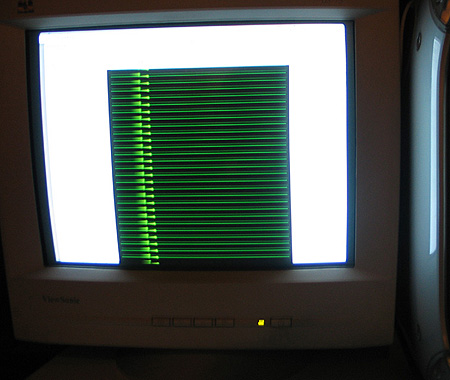
photo: Aron Namenwirth
grid on screen: Tom Moody
single units of grid: pulsing horizontal rule, found on internet

photo: Aron Namenwirth
grid on screen: Tom Moody
single units of grid: pulsing horizontal rule, found on internet
Q. "How does the record industry change its rights structure so it captures a fairer percent of the value it creates in funding, marketing and managing the launch of artists?" (question asked in a New York Times article a while back, about digital sales surpassing CD sales at Atlantic when industry income generally is shrinking.)
A. It doesn't, but rather accepts the wisdom of the digital market (aka the commons) that it, the industry, adds little value: all the loudly-mastered CDs, bad promo photos plastered on bus shelters, and ear-bleeding AM play can actually hurt.
The industry accepts that while the above promotional techniques can "make" an artist by bludgeoning the public into accepting the performer, that support is fickle and easily withdrawn by the industry so that the short term benefits of being "made" are outweighed by the lifetime of neglect that can follow being "unmade." (As opposed to a more healthy, holistic model of artist development--fans find artist through "free" internet downloads and become a sustaining--but not always necessarily paying--community.)